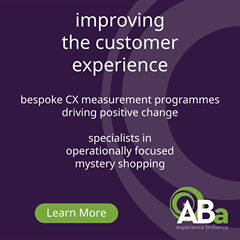[ COMMENT ] John Lewis – What comes after NKU? Part Two
Last month’s announcement that John Lewis will be abandoning its 97-year-old “Never Knowingly Undersold” price promise did not come as a surprise. NKU has been adapted over the last few years, and the partnership publicly stated that it was under review in 2020.
The reasons for its removal are also clear: bluntly, NKU is too challenging financially and operationally for John Lewis, especially in its weakened form thanks to the rise in online-only competitors such as Amazon, FeelUnique and AO.com.
Read more about the underlying challenges with NKU and my perspective as a former John Lewis buyer HERE.
What was unexpected about the partnership’s announcement is that there was no clearly articulated view of an alternative policy, slogan or direction. This was a missed opportunity to land a new mantra with both press and customers and remind those who have changed their buying behaviours why they should go back into John Lewis Stores.
It seems that John Lewis is still trying to find its point of difference. The press release about the removal of NKU shared a new “promise” around quality, style and value, which doesn’t seem to offer much differentiation to the ambitions of many other retailers. (Maybe management are keeping cards close to their chests: the proof, of course, will be in the execution.) A John Lewis representative was keen to point out this is “not a new slogan”. So what is it, then?
How to define value
The NKU press release focused heavily on the expanded ANYDAY range, which they are pushing heavily as an illustration of the new strategy. Curious, I asked a John Lewis representative for a list of retailers that they use as value benchmarks, but they declined to comment.
However, some sleuthing on my part revealed that prices on basics across homewares and fashion – such as a cotton cushion and plain white T shirt – seem closely matched to Dunelm, Next and M&S, albeit not to supermarkets or discounters. For the latter, John Lewis would no doubt point out differences in product quality and ESG credentials, which will be important to some (but not all) of their target customers.
John Lewis have also stated that they were investing £500m into prices, up 25% on last year. However, my questions on this also went unanswered. Whilst £500m is a lovely round number for a headline, I’m not sure what it really means (and I suspect customers won’t be either). Is it the value of price promotions? Of stock they are buying in these new, better value ranges such as ANYDAY? Or the difference between the value of these ranges at historical prices vs new prices?
What next?
As the last truly national traditional department store still standing, there will be a lot of scrutiny over John Lewis’s next move. The partnership need to work quickly to find customer-facing wording that will resonate with their target audience and which is genuinely backed up by customers’ experiences in store and online.
Department stores should be focused on finding the clear space where other retailers, particularly online retailers, cannot play. Otherwise what hope is there in getting their middle-class, predominantly working-at-home target customers through the doors? The three most effective ways to differentiate are curation, experience and convenience, underpinned by a robust loyalty programme.
Looking at each of these in turn, curation – the right combination of brands and products – is hugely important. Own brand will be part of the key to unlock this, as customers should be seeking out the best products that are only available at John Lewis. The song and dance about ANYDAY is interesting, but to grow both the top and bottom lines John Lewis will need to trade customers up to higher price point own brands, as well as exclusive products from well-known brands and overall a relatively tight, edited range that gives customers confidence in their choices.
From an experience perspective, John Lewis needs to give customers a reason to come into stores – whether to browse unique products, shop more tactile categories, utilise services and activities that can’t be done online, enjoy the food & beverage offerings or receive advice that is so good that it can’t be replicated.
Customer service itself is a critical part of the experience in making those expensive pieces of real estate work financially. Having spent the last few weeks informally sounding out John Lewis shoppers, I believe there is some way to go here, with customers frustrated at closed till points, or by partners that don’t offer help and/or the tailored advice that once made the Partnership famous. The number of partners on the shopfloor have clearly been cut in response to Covid, but taking out further resource here will be a false economy.
It’s hard for John Lewis to win back an Amazon Prime customer, but convenience in the form of the store estate does play an important part for customers who want to make an immediate purchase. Maintaining availability, which is about to become even more challenging, will be ever more important in satisfying these customers. Similarly a slick online and returns operation, especially through the Waitrose network, and continuous improvements in delivery timings, slots and reliability will offer value to customers in a different form.
Finally, a loyalty scheme isn’t just about customers wrangling about free coffee or newspapers – it should offer genuine value to surprise and delight customers. John Lewis has a wealth of customer data thanks to its broad product range, credit card, loyalty scheme and multichannel proposition and should ensure that the promised replacement for free newspapers genuinely excites individual customers with a personalised offering of genuinely tailored promotions and experiences.
Back to retail basics
In many ways a “back to basics” approach, offering genuinely excellent retail standards, must be the immediate focus. I fear that the lack of a well-articulated customer facing proposition and new ambitions around non-core activities housing and financial services could provide a distraction.
I’ll be happy to be proved wrong; it would be a very sad day for high streets, suppliers and customers alike for Britain to lose it’s last nationwide department store chain. I’ll be rooting for the Partnership’s success.
Rebecca Saunders is an independent retail consultant who worked for John Lewis from 2009-2015.
Please get in touch direct HERE



![[ COMMENT ] John Lewis – What comes after NKU? Part Two](images/loader.gif)










